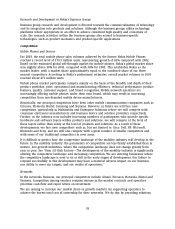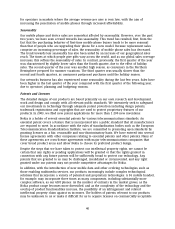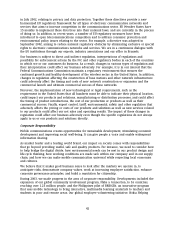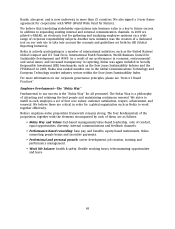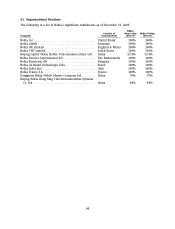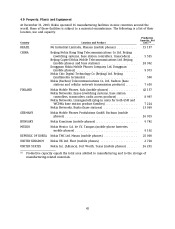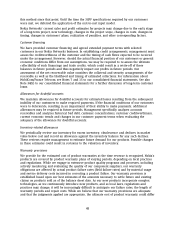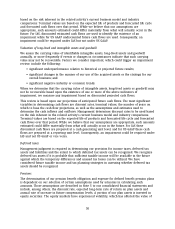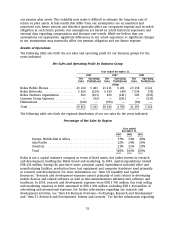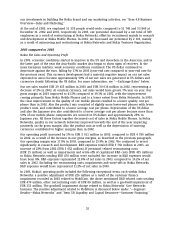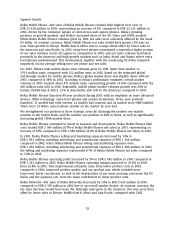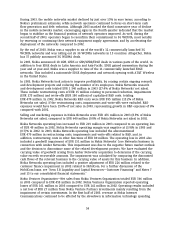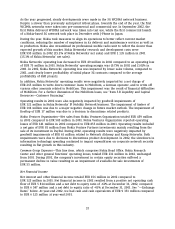Nokia 2003 Annual Report Download - page 49
Download and view the complete annual report
Please find page 49 of the 2003 Nokia annual report below. You can navigate through the pages in the report by either clicking on the pages listed below, or by using the keyword search tool below to find specific information within the annual report.this method since that point. Until the time the 3GPP specifications required by our customers
were met, we deferred the application of the cost-to-cost input model.
Nokia Networks’ current sales and profit estimates for projects may change due to the early stage
of a long-term project, new technology, changes in the project scope, changes in costs, changes in
timing, changes in customers’ plans, realization of penalties, and other corresponding factors.
Customer financing
We have provided customer financing and agreed extended payment terms with selected
customers in our Nokia Networks business. In establishing credit arrangements, management must
assess the creditworthiness of the customer and the timing of cash flows expected to be received
under the arrangement. However, should the actual financial position of our customers or general
economic conditions differ from our assumptions, we may be required to re-assess the ultimate
collectibility of such financings and trade credits, which could result in a write-off of these
balances in future periods and thus negatively impact our profits in future periods. Our
assessment of the net recoverable value considers the collateral and security arrangements of the
receivable as well as the likelihood and timing of estimated collections. For information about
MobilCom/France Telecom, see Notes 7 and 15 to our consolidated financial statements. See also
Note 34(b) to our consolidated financial statements for a further discussion of long-term customer
loans.
Allowances for doubtful accounts
We maintain allowances for doubtful accounts for estimated losses resulting from the subsequent
inability of our customers to make required payments. If the financial conditions of our customers
were to deteriorate, resulting in an impairment of their ability to make payments, additional
allowances may be required in future periods. Management specifically analyzes accounts
receivables and analyzes historical bad debt, customer concentrations, customer creditworthiness,
current economic trends and changes in our customer payment terms when evaluating the
adequacy of the allowance for doubtful accounts.
Inventory-related allowances
We periodically review our inventory for excess inventory, obsolescence and declines in market
value below cost and record an allowance against the inventory balance for any such declines.
These reviews require management to estimate future demand for our products. Possible changes
in these estimates could result in revisions to the valuation of inventory.
Warranty provisions
We provide for the estimated cost of product warranties at the time revenue is recognized. Nokia’s
products are covered by product warranty plans of varying periods, depending on local practices
and regulations. While we engage in extensive product quality programs and processes, including
actively monitoring and evaluating the quality of our component suppliers, our warranty
obligations are affected by actual product failure rates (field failure rates) and by material usage
and service delivery costs incurred in correcting a product failure. Our warranty provision is
established based upon our best estimates of the amounts necessary to settle future and existing
claims on products sold as of the balance sheet date. As our new products incorporate complex
technologies, as we continuously introduce new products, and as local laws, regulations and
practices may change, it will be increasingly difficult to anticipate our failure rates, the length of
warranty periods and repair costs. While we believe that our warranty provisions are adequate
and that the judgments applied are appropriate, the ultimate cost of product warranty could differ
48



